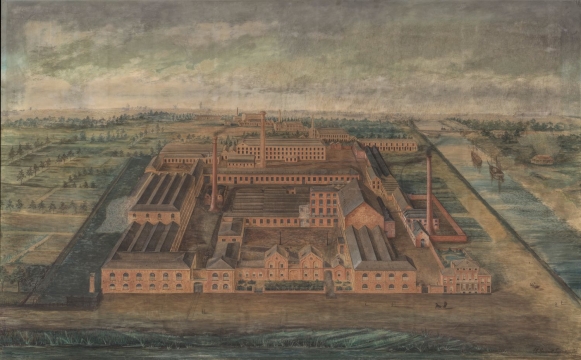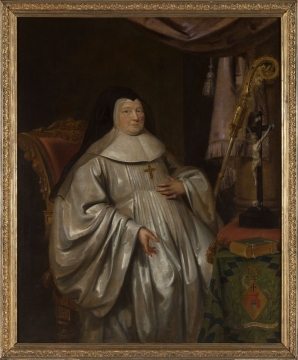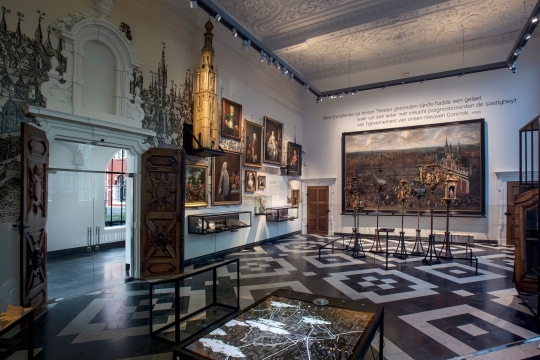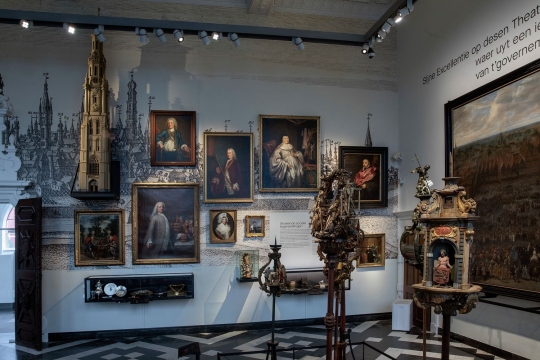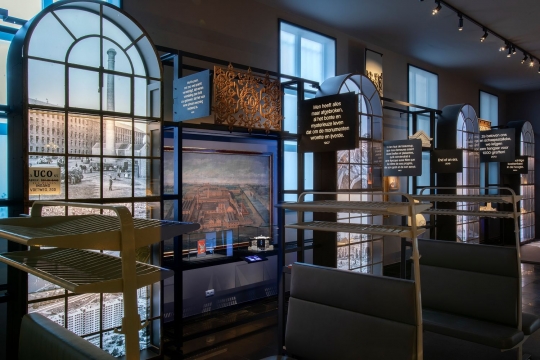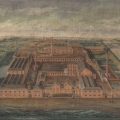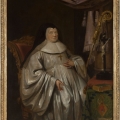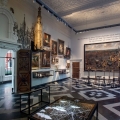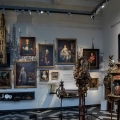After extensive renovation, the STAM re-opened its doors in December 2000. Among the works on show are several new ones that illustrate the history of Ghent. Three of the works have been restored thanks to support from Funds managed by the King Baudouin Foundation. The Jacques Bollens Fund contributed financially to the restoration of the gouache Vue de la fabrique de coton Parmentier, Van Hoegaerden & Cie, whilst the Léon Courtin-Marcelle Bouché Fund bore the costs for the restoration of two 18th century portraits of abbesses.
Ghent, an industrial city
The new permanent display of the STAM relates the history of the city of Ghent through heritage documents and works of art. Among the works exhibited is the Vue de la fabrique de coton Parmentier, Van Hoegaerden & Cie. (View of the Parmentier, Van Hoegaerden & Co. Coton Factory). This gouache on paper, which has recently been restored thanks to support from the Jacques Bollens Fund, show the history of Ghent as an industrial city in the 19th century. It represents the cotton mill in a rural environment of the period, surrounded by the fields known as the Wondelgemse Meersen. Up until around 1840, factories were installed in existing buildings (e.g. the Château des Comtes) or in a more modest, recent building. Later, however, real industrial ‘palaces’ were built, along the lines of those in Manchester. This type of polychrome gouache constitutes a unique historical document. Such works were generally commissioned by directors of the companies themselves. Given their great fragility - the works are very sensitive to the light and humidity - very few have come into our possession.
The Ghent abbesses
Other works worth discovering are the 18th century portraits of Eleonore Diltoer and Sabina Bruggeman, the last abbesses respectively of the Cistercian abbeys, the Nieuwenbosch Abbey and La Biloque in Ghent. Up until a few years ago, the two portraits were kept in a monastic community that was not open to the public. The Léon Courtin-Marcelle Bouché Fund took charge of the restoration costs of the two portraits. The new design of the museum includes a complete wall of portraits of well-known, but essentially male, personalities of Ghent in the 17th and 18th centuries. The portrait of the Abbess Eleonore Diltoer enables a woman to be highlighted too, whilst also being part of the museum’s historical story. Towards the end of the old regime, a whole series of institutions disappeared, including the Nieuwenbosch Abbey.
The portrait of Sabrina Bruggeman will be part of the new display relating to the history of the site and the former convent building of La Biloque, which now houses the STAM.
